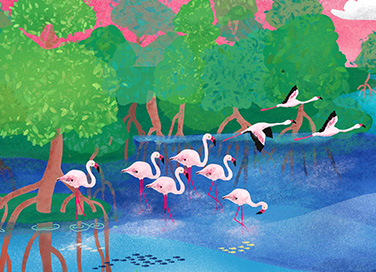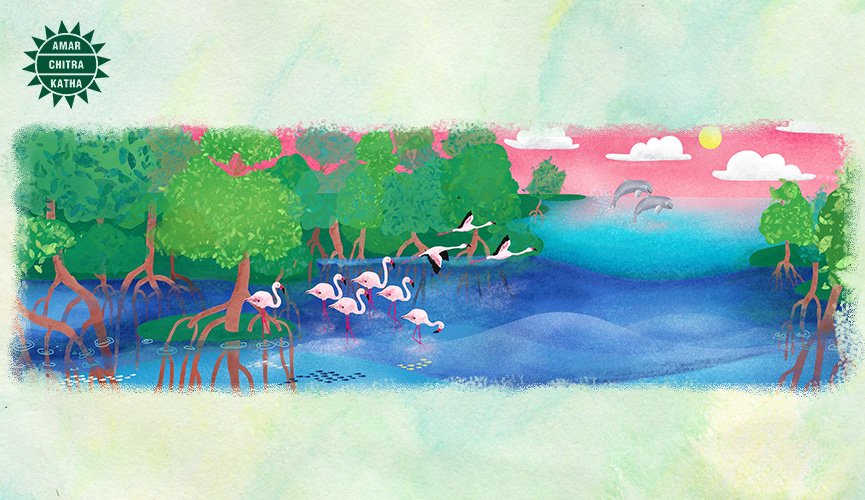Wetlands of India
- June 28, 2023


Wetlands of India
- June 28, 2023
By Shakthi Bharathi
Every year on 2 February, we celebrate World Wetlands Day, to bring attention to wetlands, which are crucial to our survival on Earth. But wait — what’s a wetland?

Wetlands are areas of land, permanently or seasonally covered by water. They reduce flooding, trap carbon, and combat climate change. They also clean and filter water, earning the tag “Kidneys of the Earth”.
To receive more such stories in your Inbox & WhatsApp, Please share your Email and Mobile number.
On 2 February, 1971, the Ramsar Convention, which pledges conservation and sustainable use of wetlands, was signed in Ramsar, Iran. India joined the treaty in 1982.
Did you know that Sambhar Lake, in Rajasthan, is a wetland? Every monsoon, flamingos flock to the lake, in a vibrant display of migration.
Another such wetland is Chilika Lake in Odisha. It is home to rare aquatic animals, including the ever-smiling Irrawaddy dolphin.
Wetlands are just as rich in flora as they are in fauna. Pichavaram Village of Tamil Nadu has the world’s second-largest mangrove forest. (Psst…the first is also our very own Sunderbans!)
Due to pollution and exploitation, wetlands have become one of the world’s most endangered habitats. Over 70 Indian wetlands of significant value have been identified by the Ramsar Convention, but we are losing them at the rate of 2-3% every year!
It is time for us to speak up, take action, and protect Mother Nature’s invaluable gifts, for our own survival and the survival of all life on Earth. Make a resolution and be the change!
Read about inspiring figures who have brought about changes in the world, on the ACK Comics app!
To receive more such stories in your Inbox & WhatsApp, Please share your Email and Mobile number.

Comic of The Month
The Sons of Rama
The story of Rama and Sita was first set down by the sage Valmiki in his epic poem 'Ramayana.' Rama was the eldest son of Dasharatha, the king of Ayodhya, who had three wives - Kaushalya, Kaikeyi and Sumitra. Rama was the son of Kaushalya, Bharata of Kaikeyi and Laxmana and Shatrughna of Sumitra. The four princes grew up to be brave and valiant. Rama won the hand of Sita, the daughter of King Janaka. Dasharatha wanted to crown Rama as the king but Kaikeyi objected. Using boons granted to her by Dasharatha earlier, she had Rama banished to the forest. Sita and Laxmana decided to follow Rama. While in the forest, a Rakshasi, Shoorpanakha, accosted Laxmana but had her nose cut off by him. In revenge, her brother Ravana, king of Lanka, carried Sita away. Rama and Laxmana set out to look for her and with the help of an army of monkeys, defeated Ravana. On returning Ayodhya after fourteen years of exile, Rama banished Sita because of the suspicions of his subjects. In the ashrama of sage Valmiki, she gave birth to her twin sons, Luv and Kush.